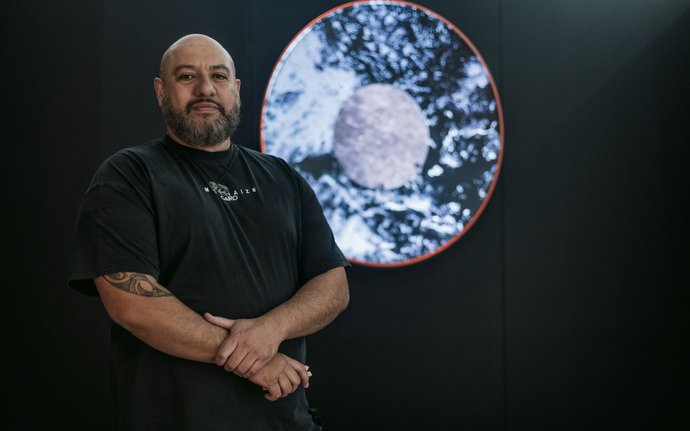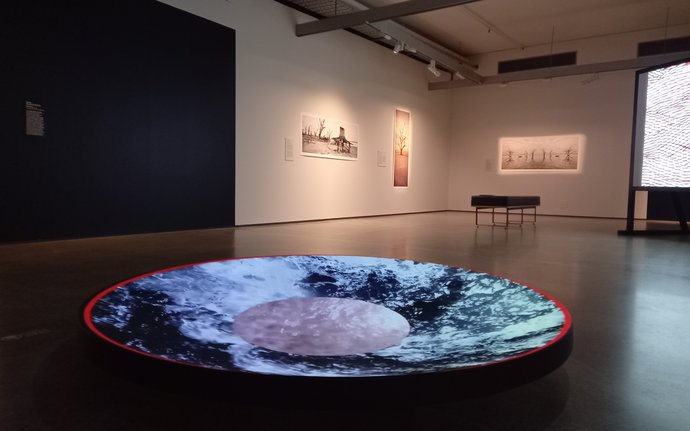Artist Israel Birch on 'Painting with Light'
1 Sep 2023
This article first appeared in The Post, 22 August, 2023.

This article first appeared in The Post, 22 August, 2023.

Israel Tangaroa Birch (Ngā Puhi, Ngāi Tawake, Ngāti Kahungunu, Ngāti Ra kaipaaka) is considered one of New Zealand’s most talented Māori artists. He recently left a 15-year teaching job at Massey University for a full-time art practice. He loves Māori conceptual art where the idea takes priority, and the object is made to enhance the meaning. In Naadohbii: To Draw Water at Pātaka, he is exhibiting a video work called Rerenga Wairua.
My father was a master carver who loved the taiao, especially the ocean. As a kid, I spent lots of time in the ocean with my whānau, and my father liked it so much, he gave me the middle name Tangaroa. I still enjoy diving, spearfishing and, occasionally, surfing, which all inspire my artwork.
Trust was the most favourite part of the project. The collective trust influenced all the artists to reach their potential. I project-led the whare kai Te Whaioranga o Te Taiao, which represents Tangaroa and Hinemoana, the male and female deities associated with the ocean. I’m very proud of Te Rau Karamu marae, and we’ve even won a few awards.
Colonisation and racism remain at the forefront of our challenge. They permeate our day-to-day lives in many ways. We need to be kind to each other and make space for each other. Manaakitanga, kindness, is the solution.
My father was the first. As a kid I saw him carve a whare whakairo in Hastings called Te Matau a Māui, a radical house for its time. I discovered toi, art, as a vehicle for wellbeing. There are too many inspirational artists to mention, but Ralph Hotere continues to inspire.
I have two spaces in my practice. One is Rongo, the atua of peace. My painting practice lives in this space and is defined as ‘painting with light’. Light and dark is my medium.
The other is Tūmatauenga. Although it’s known as the ‘god of war’, I like to play in the space of wero, challenge, a space of vitality. It’s a space to create challenging or ‘political’ art that provokes critical thinking.
We have a funding issue. If we fund our artists, society will be better off. We all love some aspect of art and creativity, so let’s support our creatives! Also, a day off for art.
In the Māori world, one of the central elements of toi is whakapapa. We make work to give life to whakapapa. There are multiple facets to my practice, but an important one is to make taonga for people and their whānau. Some people might only see artists exhibiting and selling their work, but I make taonga that lives in people’s homes and becomes taonga for their children.
Naadohbii: To Draw Water is a special kaupapa that started in Winnipeg Art Gallery, toured to the Melbourne Museum and is now home at Pātaka. The name was gifted by elder Dr Mary Courcene. Naadohbi brings together contemporary Indigenous artists from Turtle Island Canada, First Peoples of Australia and Māori to share our connections to water. With the changing climate, it’s a critical conversation.
I love Whittaker’s Chocolate. It’s a national icon and I hope to work with them someday ha-ha.
